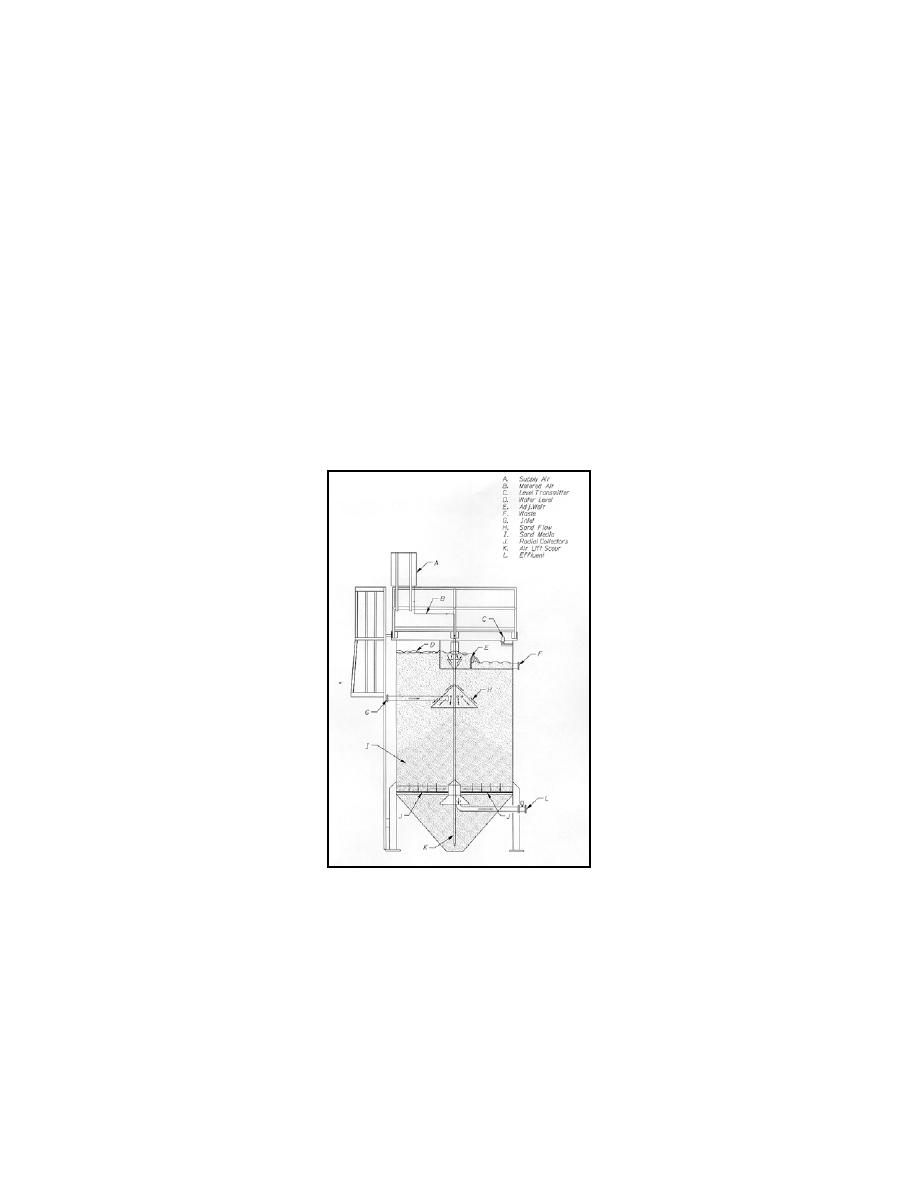
UFC 3-280-04
17 DEC 2003
increasingly finer sand, enters a filtrate chamber, and is discharged. The coarse-to-fine
gradation occurs as clean sand falls from the washbox to the top, and center, of the fil-
ter bed. The coarsest sand "rolls" to the periphery of the filter cell while the finest parti-
cles remain at, or near, the peak of the filter bed. This grading process is the result of
gravity's effect on the varying sizes of sand as it seeks its natural angle of repose. The
coarse-to-fine gradation is maintained throughout the depth of the filter as the airlift
pump continually removes the lowest layer of sand for cleaning. The airlift tube assem-
bly transports the sand media and captured solids to the top of the filter. The turbulence
within the assembly separates the sand from the solids. Both sand and solids are
placed into a sand washer chamber, which operates in essentially the same manner as
that employed by the upflow system. The heavier sand falls back into the sand bed and
the solids are discharged through the reject pipe. Figure 5-8 shows a typical downflow
continuous backwash system configuration.
Figure 5-8. Typical Downflow Continuous
Backwash System
Generally, the sand used in the downflow continuous backwash filter is
coarser than the sand layer in granular media filters used in batch processes (12 mm
as opposed to 0.41 mm for the sand layer in dual media filters). The media depth will
be on the order of 1.2 m (4 ft) with a surface loading of 814 (m3/m2)/hr (3.35.7
gpm/ft2). The backwash rate is typically on the order of 10% of the surface loading. Be-
cause of the coarser media grain size and the continuous agitation of the medium and
removed solids, the removal efficiency of the downflow continuous backwash filter is not
as high as is available through gravity and pressure granular media filters. Generally ef-
fluent on the order of 10 mg/L TSS can be expected.
5-25



 Previous Page
Previous Page
